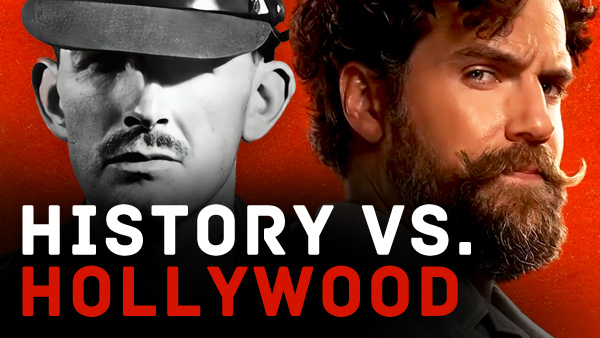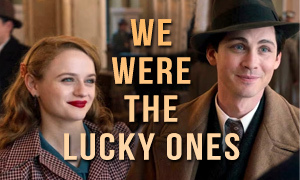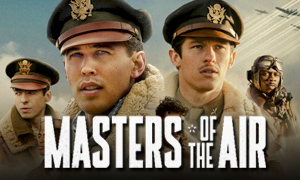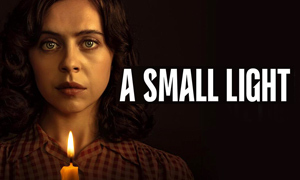Greyhound: History vs. Hollywood
Is Greyhound Based on a True Story?
No, not exactly. Despite being rooted in World War II history, the Tom Hanks movie is not directly based on a true story. It is instead based on author C. S. Forester's 1955 novel The Good Shepherd. Though the book's story is fictional, it was heavily researched and takes place at the midpoint of World War II during the Battle of the Atlantic in the winter of 1942. Tom Hanks portrays Naval Commander Ernest Krause (named George Krause in the book), who after years of being a career officer is finally given command of a destroyer, the USS Keeling, whose radio codename is "Greyhound." Krause commands a multi-national group of four escort ships tasked with protecting a convoy of merchant ships that are being hunted by German U-boats.
The movie's story takes place over a five-day period in the Atlantic when the 37-ship convoy is without air cover. Aided by two British destroyers and a Canadian corvette, Hanks as Krause must evade and fight not only the enemy submarines, but also his own self-doubt.
How long did the Battle of the Atlantic last?
While the movie finds Tom Hanks' Commander Ernest Krause and the convoy caught up in the Battle of the Atlantic over a five-day period in the latter part of 1942, the battle actually spanned almost the entirety of the war, beginning on September 3, 1939 and ending on May 8, 1945.
Was the USS Keeling a real naval destroyer?
No. A Greyhound fact check reveals that the USS Keeling (codenamed "Greyhound") is fictional and was not a real-life Navy destroyer. A large portion of the movie was shot aboard the USS Kidd (DD-661), a Fletcher-class Navy destroyer named after Rear Admiral Isaac C. Kidd, who lost his life on the bridge of the USS Arizona during the Japanese attack on Pearl Harbor in 1941. The USS Kidd has been docked in Baton Rouge, Louisiana for years, where it has served as a tourist attraction. One of the main reasons the filmmakers chose to shoot on the historic battleship is because the Kidd is the only surviving WWII destroyer still in her wartime configuration.
If you listen closely during the movie, one of the sailors on the ship refers to a buddy he knows who was on the Kidd. While it's a nice nod to the ship the movie was filmed on, in real life, the USS Kidd wasn't launched until late February 1943, several months after the events in the movie take place.
How important was the Battle of the Atlantic?
The part of Greyhound that's based on a true story is the Battle of the Atlantic, in which the fictional USS Keeling becomes involved. The WWII battle focused on Germany's effort to cut off transatlantic supply lines by gaining control of the Atlantic Ocean. The U.S. and Canada needed to maintain the vital flow of supplies and men to Europe in order to keep up the fight. Germany knew that stopping the supply line would essentially give them victory in Britain and the rest of Europe, as well as the Soviet Union, thus ending the war. There wouldn't have been enough men, food, weapons, or resources to make weapons. There would have been no American soldiers for D-Day, and in turn, no D-Day and no victory.
Germany used squadrons of U-boats known as wolf packs, in addition to various warships, to prowl the Atlantic Ocean and hunt down and attack Allied convoys, which is what they do to the convoy Commander Krause's ships are protecting in the Greyhound movie. The strategy that the Allies used was to send a group of merchant ships across the Atlantic in a convoy that was escorted by a group of warships, and, when feasible, aircraft. Logistically, moving approximately 40 ships as a cohesive unit was anything but easy. It was also more difficult to remain unnoticed by the Germans.
The Battle of the Atlantic was the longest continuous battle of WWII. Losing the supply lines was a constant worry for the Allies. To emphasize the importance of the battle, Winston Churchill coined the name "Battle of the Atlantic," intentionally alluding to the Battle of Britain.
To learn more about the importance of the Battle of the Atlantic, watch our episode Greyhound: History vs. Hollywood featured below. To follow our latest episodes, subscribe to the History vs. Hollywood YouTube Channel.
How close did German U-boats get to the East Coast of North America?
By early 1942, U-boats had begun to wreak havoc directly off the east coast of North and South America, easily picking off merchant ships that were poorly defended. The Allies had yet to set up a convoy system, and according to the Monitor National Marine Sanctuary, between January and July 1942, 86 ships sank off the coast of North Carolina, claiming the lives of more than 1,100 merchant seamen. The danger of traversing the Atlantic is echoed in the Greyhound movie's trailer, which states, "The only thing more dangerous than the front lines was the fight to get there."
However, by winter 1942, the tide had begun to turn and U-boats were more and more becoming the hunted rather than the hunter. Convoys that included escort ships had become commonplace. Instead of picking off lone ships, U-boats had to intercept the convoys, which required them to operate in groups known as wolf packs. Deadly battles ensued, but the Germans simply didn't have the numbers to cover the vast waters of the Atlantic. They began to take heavy losses. Approximately 41 U-boats were sunk in May 1943 alone, and as a result, Germany decided to withdraw the U-boats.
Is Tom Hanks' character, Ernest Krause, based on a real commander?
No. As we parsed out the Greyhound true story from the movie, we learned that Commander Ernest Krause is a fictional character based on Commander George Krause from C. S. Forester's book The Good Shepherd. The character's first name was changed for the movie.
Did German U-boats taunt U.S. destroyers with radio messages?
No. At several points in the film, a German U-boat uses Greyhound's transmitting frequency and broadcasts threatening messages over the ship's loudspeakers. This never happened in real life. While the U-boats did occasionally eavesdrop after stumbling upon the transmitting frequency of the escort ships, as far as we know, they were never able to transmit on that frequency, nor were they able to hack into and broadcast over the convoy's inter-ship communication system.
Did Allied warships ever get so close to German U-boats that they were almost touching?
Yes. While this rarely happened, such destroyer-vs-submarine duels did take place on one or two real-life occasions. The movie's fictional incident is based on an event that unfolds in The Good Shepherd book from which the film was adapted. The real-life clash that may have inspired the duel in the book happened on November 1, 1943 between the USS Borie and U-boat U-405. The U.S. destroyer was trying to ram the U-boat when a wave cause its bow to come down on top of the U-boat, trapping both in a deadly dance. The U-boat was too close for the destroyer's guns, so the crew members opened fire with rifles, submachine guns, and machine guns. U-boat U-405 was swallowed by the sea that night, adding to the Atlantic's WWII seabed graveyard. The USS Borie was badly damaged and scuttled the following day.
Most of the encounters that happened between warships and U-boats unfolded at a distance with depth charges and torpedoes.
How many Allied sailors, aviators, and merchant seamen died during the six-year-long Battle of the Atlantic?
In conducting our Greyhound fact check, we discovered that up to 80,000 Allied sailors, airmen, and merchant seamen were killed during the six-year-long Battle of the Atlantic, which spanned almost the entirety of WWII. Germany lost roughly 28,000 to 30,000 U-boat crewmen, roughly 70 percent of the 41,000 German seamen who took part in the lengthy battle. Percentage-wise, it was the most severe loss of any of Germany's armed forces.
How many ships were lost during the Battle of the Atlantic?
From 1939 to 1945, the Allies lost roughly 3,500 merchant ships and 175 warships. Still, 80 percent of Allied convoys completed the journey safely. During that same period, Germany lost 783 of its 1,100 U-boats.
Do any films depict what it's like to be a German sailor on the U-boats during the Battle of the Atlantic?
Yes. Several films are told from the point of view of the German U-boat crews. The best is probably Wolfgang Petersen's 1981 movie Das Boot, which does a superb job recreating the deplorable conditions, boredom, and nerve-racking tension experienced by the crews.







